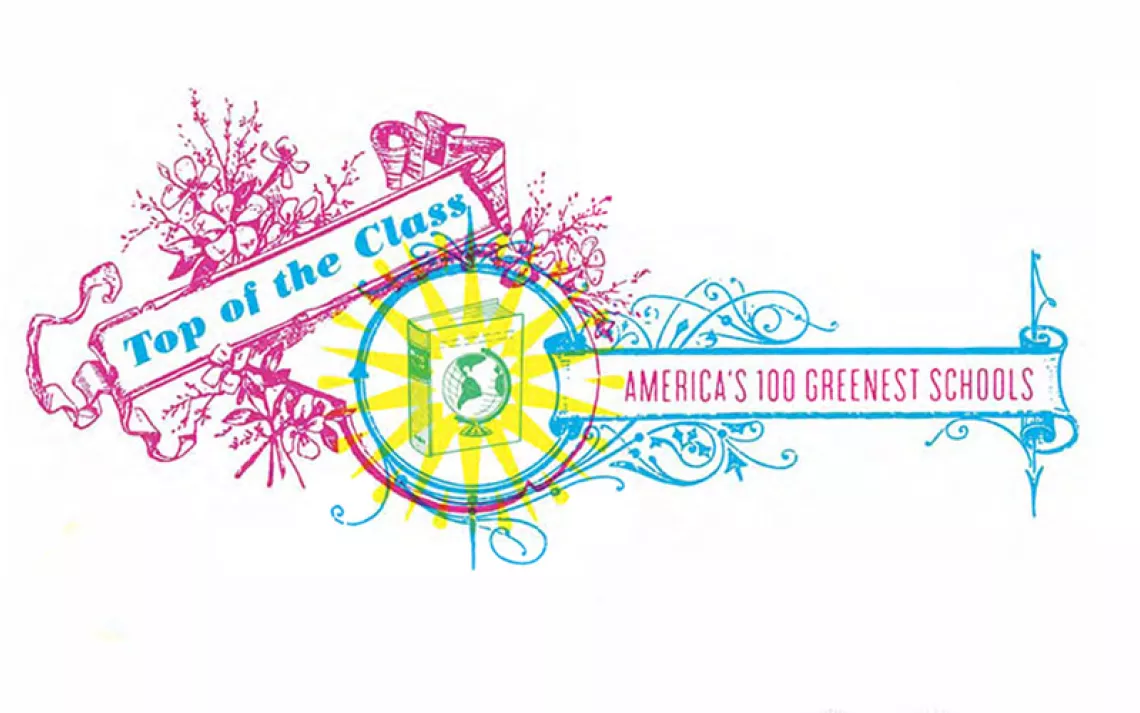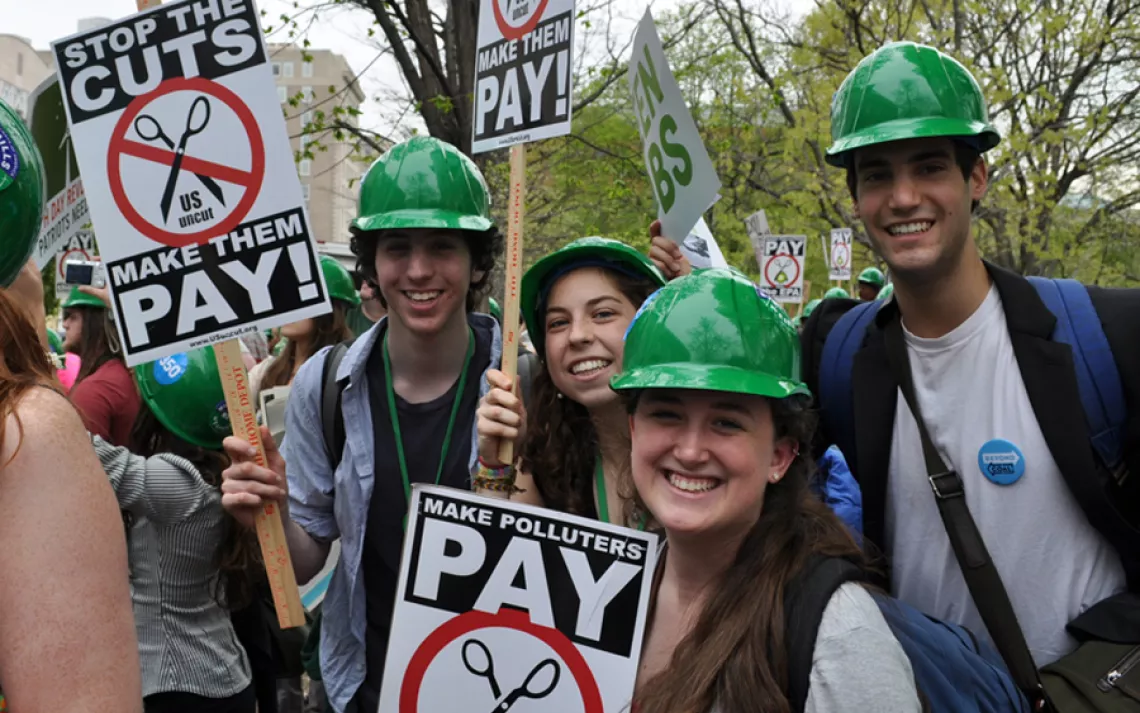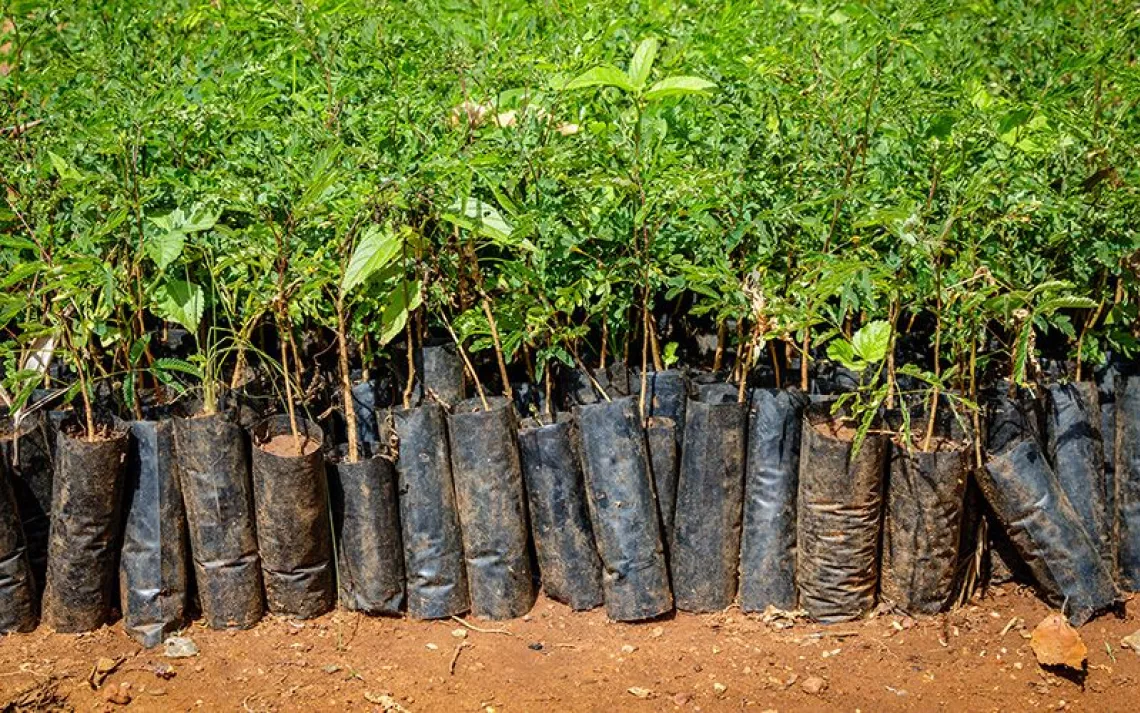Climate Curricula Hit US Schools
As the crisis unfolds, approaches vary widely throughout the country

The Green Team at New Jersey's Delran Intermediate School receives funding from the nonprofit Sustainable Jersey, which offers certifications and grants for environmental education projects. Similar organizations exist throughout the country. | Photo courtesy of Sustainable Jersey
In 1925, Tennessee high school science teacher John T. Scopes committed a criminal act in his classroom—he defied the state law by teaching evolution in a public school. While Scopes was initially found guilty and fined $100, the infamous case helped turn the public against undue religious influence in schools.
Nearly a century later, evolution is a standard unit in most high school biology courses. Yet its legitimacy within the classroom continues to be challenged; in 2019, more than 10 percent of biology teachers said they endorse creationism. In Russellville, Arkansas, a small manufacturing town that’s home to a nuclear plant and Arkansas Tech University, high school life sciences teacher Chance Duncan has noticed another topic stirring similar controversy in local classrooms: climate change.
When Arkansas was updating its statewide science standards in 2015, state representative Mary Bentley filed an emergency petition to halt the process because she opposed the language affirming the legitimacy of evolution and human-driven climate change. Duncan, who serves as the high school director of the Arkansas Science Teachers Association, reached out to the conservative local lawmaker (who also owns a plastics company) to learn more—and possibly change her mind. Duncan says he explained that activities like fracking, which had recently ramped up in Arkansas, have lasting environmental impacts.
Duncan isn’t sure whether this conversation is what swayed Bentley to withdraw the petition later that month, but the standards passed soon after. State standards matter because they determine textbook content, high-stakes statewide testing, and instructor coursework, says Glenn Branch, deputy director of the National Center for Science Education. They’re also the primary source of guidance for teachers, who ultimately decide what a given class will cover.
This framework is particularly important because teachers don’t always know how to approach the topic of climate change nor understand its causes. While approximately 75 percent of public school science teachers devote lessons to the topic, according to a 2016 survey by the National Center for Science Education, less than half are aware of the scientific consensus on human-driven global warming. In fact, most teachers said they hadn’t received any university-level instruction on climate change.
“In general, public schools are going to be the last place where the majority of the population has formal instruction in the area of science, including climate science,” Branch says. “So to leverage it … is a good way of increasing public understanding of the seriousness of climate change.”
Despite the loud minority of climate deniers, more than 80 percent of parents and around 86 percent of teachers think it should be taught in school, according to a 2019 NPR/Ipsos poll. But the patchwork-style US education system means that states, districts, and even individual schools may vary widely in what they instruct.
Largely considered the golden standard, the Next Generation Science Standards (NGSS) are a rigorous set of national guidelines introduced in 2013. NGSS is among the first of its kind to explicitly encourage climate change curricula, emphasizing it as a core concept for both middle and high schoolers. Now, more than a third of US students learn according to these standards. The remaining states either follow the National Research Council framework or develop their own entirely.
Even among states that encourage mentioning climate change in science classes, not all acknowledge our role in shaping the environment. As of 2019, 36 states mentioned human-driven climate change within their standards, Branch found. This means that only about 64 percent of US students learn about our role in the climate crisis.
Some states, meanwhile, actively resist including climate change in science education. In Texas, both the fossil fuel industry and decades of political interference have ensured its omission from state guidelines, Branch says. Though the Texas Education Agency will review the climate-related science standards sometime next spring, he doubts they’ll make any major changes—but any discussion of climate change would be an improvement.
Other states neglect the topic because they are relying on outdated content. Pennsylvania hasn’t revised its science standards since 2002, Branch says, so they can’t reflect recent research. But it’s all a “moving target” as education departments convene in the coming months, a process that typically occurs every five to seven years.
Occasionally, instructors avoid bringing up climate change because of pressure from community members or employers. Three years ago, Baltimore special education teacher La Stel Walker was teaching middle school students about melting polar ice caps when an administrator advised her to stick to the curriculum. But more often, teachers lack logistical support. Throughout her 15 years of experience in both suburban and urban Baltimore-area schools, she has noticed that many teachers are reluctant to address climate change in class, commonly because of a lack of interest or tools like lesson plans—despite being held to Maryland’s Next Generation Science Standards.
“The goal is for the state or district to provide these resources for us, which would be lovely,” Walker says. “Because climate change and climate education are still hot topics for a lot of organizations, let alone school districts and government entities; it’s still a lot that’s not being spoken of … if officials acknowledge the signs of climate change, they’d have to do something about it.”
Walker also makes sure to cover environmental issues across additional subjects, like math and English, to provide a holistic view of our changing world. For example, she suggests writing word problems that examine sea level rise over the next century and how the oceans as we know them will shift. Teachers can work with nonprofits and federal agencies to find these kinds of interdisciplinary lesson plans for their classes, but it’s yet another task for overburdened professionals who commonly pay out of pocket for supplies.
This June, New Jersey became the first state to merge the topic across all content areas in K-12 standards. First Lady Tammy Murphy advocated for the update, which districts will phase in between the fall of 2021 and 2022. New Jersey math and language arts guidelines won’t be up for review until 2022, but the Board of Education plans a similar amendment.
Murphy sees this as a necessary step to prepare New Jersey residents for the transition to 100 percent clean energy by 2050. The Garden State has already witnessed the impacts of a warming world, including toxic algal blooms in lakes and rapidly shrinking wetlands.
“We’re not just going to need climate-change-literate scientists; we’re going to need to have climate literacy in our civic leaders, policymakers, urban planners, journalists, artists, you name it,” Murphy says. “It’s really important that, as we change our education standards, our state is going to be the first to ensure that our students are prepared across multiple content areas.”

New Jersey First Lady Tammy Murphy visits a school participating in the Sustainable Jersey program. Murphy observed schools' sustainability efforts across the state as she pushed to include climate change in the New Jersey K-12 learning standards. | Photo courtesy of the Office of Tammy Murphy
While environmentalists around the country have applauded New Jersey’s new standards, it’s possible that they could backfire. This type of requirement could encourage resistant teachers to instead explain that climate change is natural, says Martha Monroe, a professor and associate director of environmental education at the University of Florida who researches how educators can build understanding and critical thinking skills in students. She believes that voluntary agreements and best management practices may lead to better results in classrooms.
And it isn’t clear whether teachers throughout New Jersey will receive additional funding or professional development time as they alter their curricula. Murphy says that educators can receive the appropriate resources with help from organizations like the North American Association for Environmental Education, which points teachers toward sample lesson plans. But it’s typically up to individual districts to allocate their state and local funding for this sort of professional development, says Michael Yaple, a spokesperson for the New Jersey Board of Education.
To address this need, states like Washington and New York have recently attempted to establish environmental educational grants. Lawmakers have also sought out measures similar to New Jersey’s standards update, or tried to beef up science guidelines. Though some were ultimately killed by legislators, an “unprecedented” 19 pro-climate-change education measures were introduced in 2020, Glenn Branch says. This may signal a much-needed political shift as we come to terms with our present existential threat.
It’s especially important because effective lessons on climate change don’t solely impact burgeoning young voters; they also shape their parents’ views. A 2019 study published in Nature Climate Change found that after environmental service projects in North Carolina coastal towns, students influenced their parents’ attitudes on climate change.
After a group of middle schoolers completed activities like oyster reef restoration and sea turtle monitoring, the adults expressed higher concern about climate change—particularly among fathers and conservative parents. “Teachers can help change the nature of the conversation in a community if they navigate it carefully and do a good job,” Monroe says.
In fact, advocates of environmental education cite experiential learning and community projects as the most impactful, context-specific methods. These help students develop real-world skills as they identify problems, collect data, and communicate, Monroe says, which will be necessary for the hard decisions ahead.
Participating in these activities can also foster hope amid the doom and gloom of the climate crisis, says Christine Li, an assistant professor of environmental education at the University of Missouri who has collaborated with Monroe in the past. For example, schools can seek grants from local organizations or federal agencies like the National Oceanic and Atmospheric Administration, which has helped students build local resilience plans.
“It can be a really overwhelming topic,” Li says. “But there are a lot of things that we can show students, how a lot of people are taking action and there are many ways to solve this problem. You can take a proactive solution starting today, from personal behavior to collective action.”
Ultimately, climate change instruction will look different in every community. It was challenging to teach deforestation in Baltimore schools where students have little access to green space, La Stel Walker says, so she used PowerPoints that visualize this phenomenon. Similarly, students may not fully comprehend lessons about beach erosion when they haven’t been able to visit the ocean.
But even at a young age, children often grasp the toll taken by environmental racism. “A lot of students within the inner city understand that a large majority of them may have asthma or not have grocery stores within their communities,” Walker says.
Now at a suburban school, Walker teaches students how actions like dumping excess fertilizer in local waterways eventually affects city residents. In both situations, she instills within future voters the importance of slowing down the effects of climate change.
And to better equip students for this daunting climate future, experts have identified concrete steps for schools to take. These include broader availability of environmental and earth science classes, which Glenn Branch says offer the most detailed look at climate change throughout K-12 education. As of 2013, only one state required them for high school graduation.
Students don’t necessarily need to graduate knowing the exact details of photosynthesis, Chance Duncan says, but courses should build an awareness of our imprint on the natural world. “If they can leave high school understanding how they impact the environment and can make better choices about transportation or energy usage … I think that makes them better adults,” he says.
 The Magazine of The Sierra Club
The Magazine of The Sierra Club



